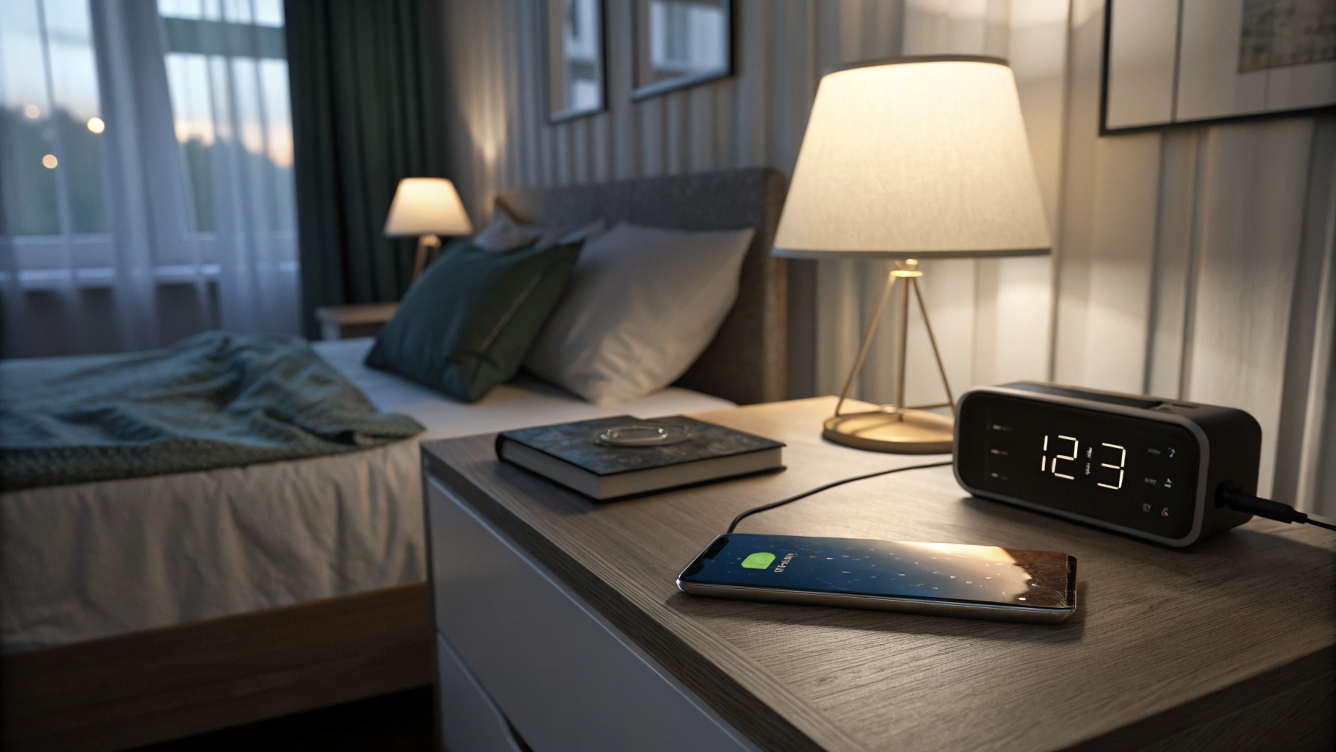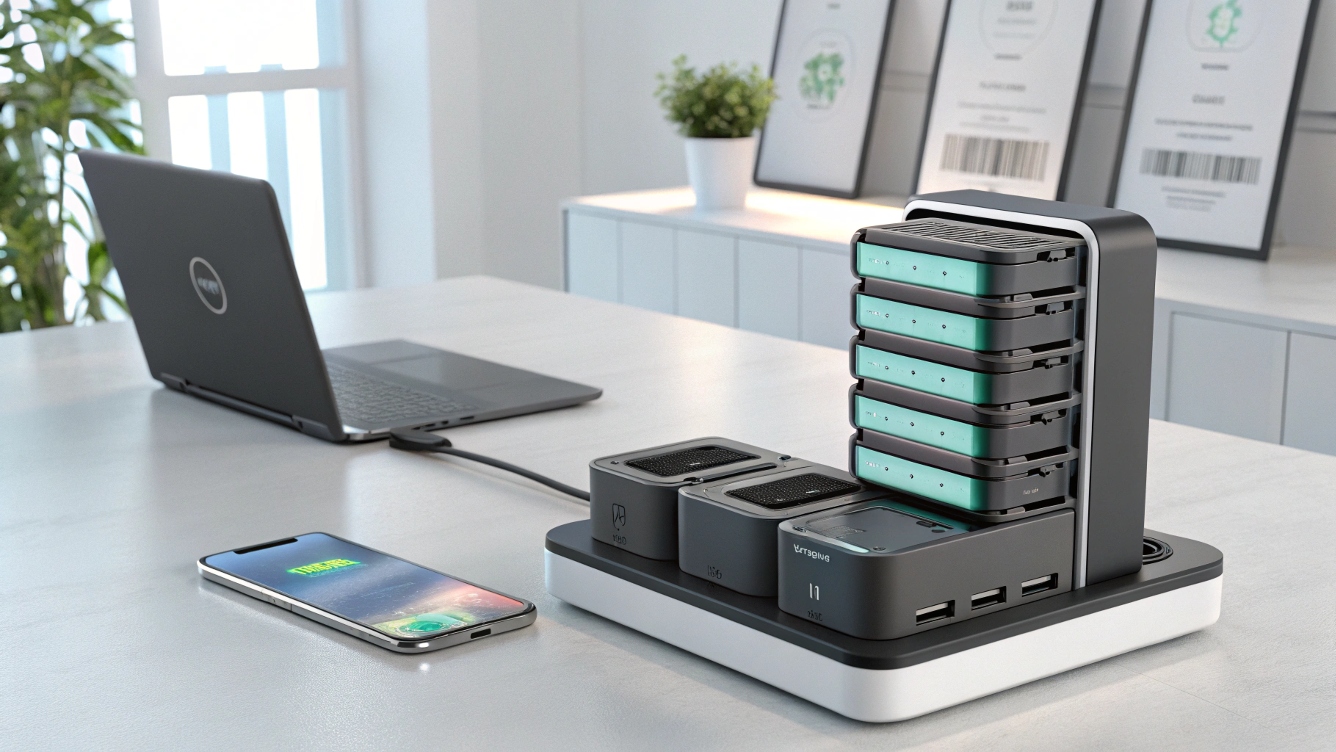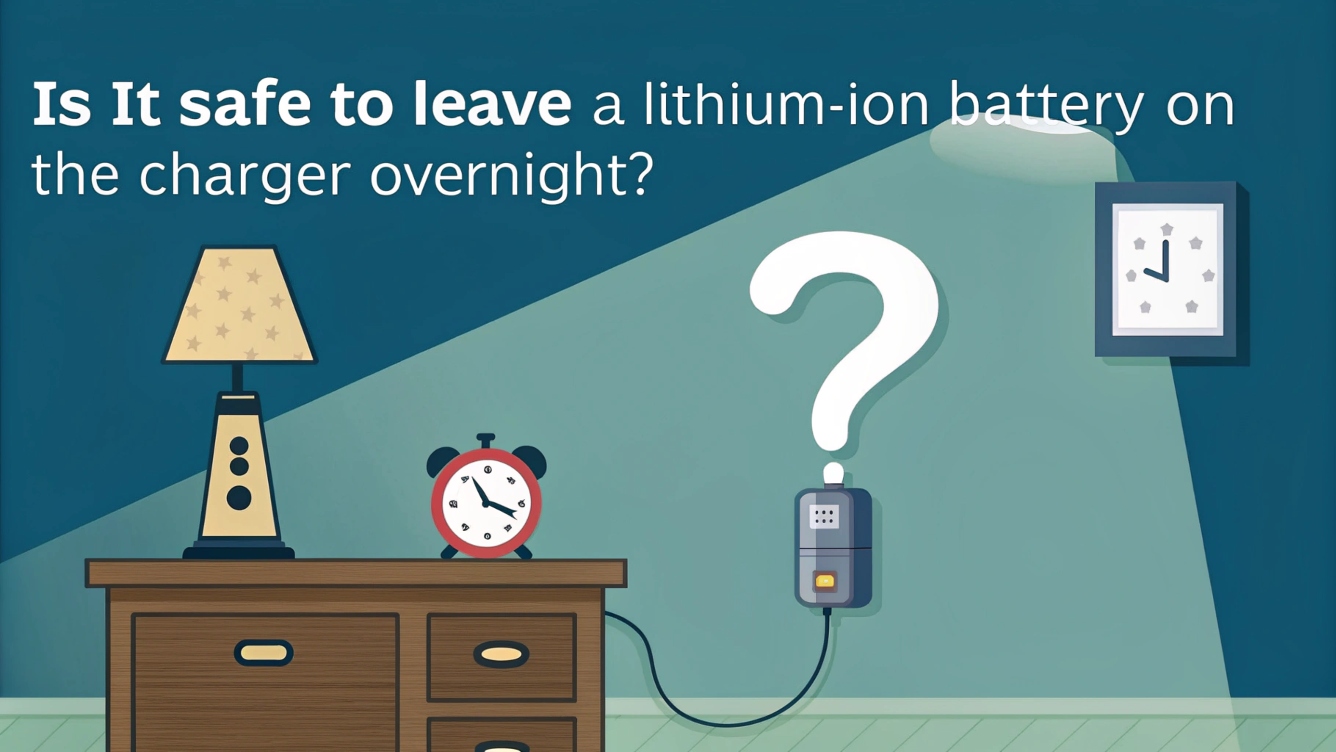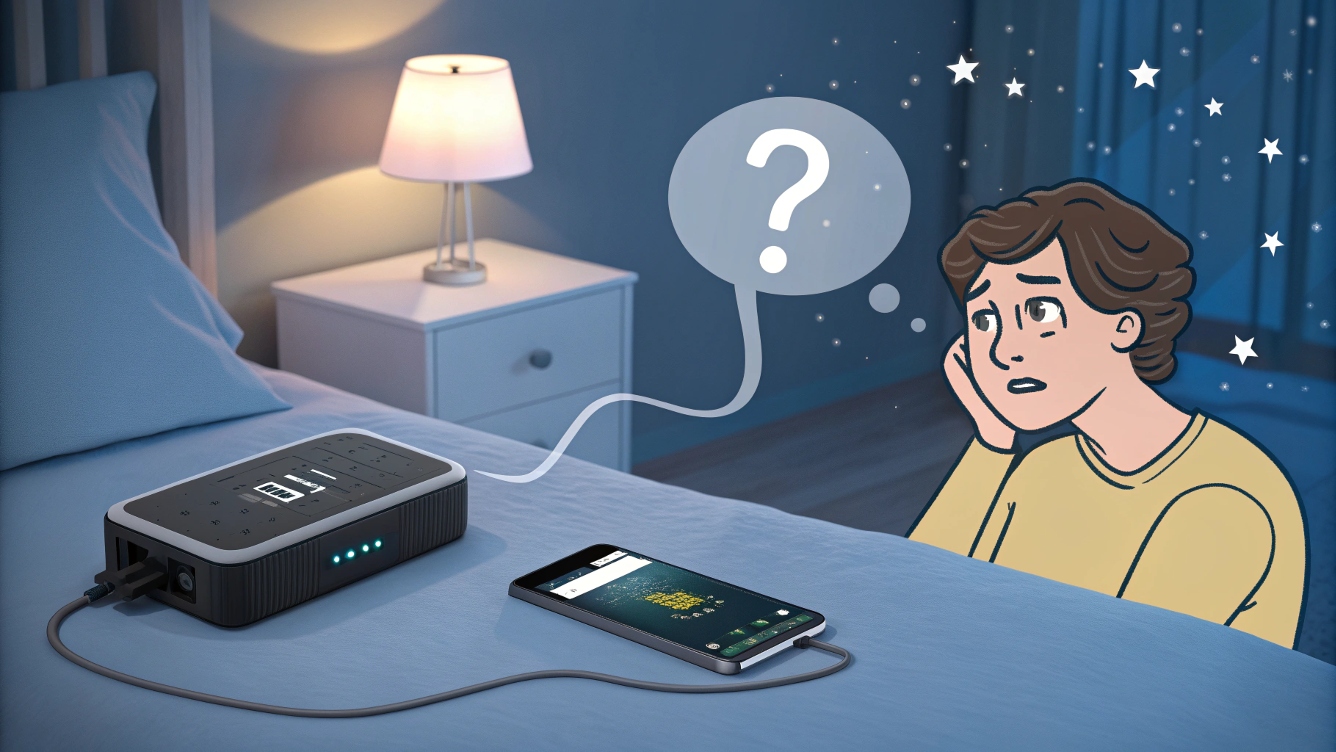هل من الآمن ترك بطارية ليثيوم أيون على الشاحن بين عشية وضحاها?
المخاطر الخفية للشحن بين عشية وضحاها
قد يبدو ترك بطاريات الليثيوم أيون على الشاحن بين عشية وضحاها مريحة, ولكن يمكن أن يسرع في التآكل ويشكل مخاطر السلامة. هذا هو السبب:
- الإجهاد الزائد: عادةً ما تتوقف أجهزة الشحن الحديثة عن الشحن 100%, لكن الشحن المتدفق للحفاظ على السعة الكاملة يولد الحرارة, تحلل البطارية بمرور الوقت. تشير الدراسات إلى أن الرسوم الكاملة المتكررة تقلل من العمر 20-30% بالمقارنة مع الشحن الجزئي:استشهد[2]:استشهد[3].
- الهرب الحراري: الشحن المطول في المناطق السيئة التهوية يزيد من مخاطر الحرائق, خاصة مع البطاريات التالفة أو المزيفة. على سبيل المثال, منتفخ 18650 يمكن أن تصل الشحن اليسرى الخلية بين عشية وضحاها إلى درجات حرارة تتجاوز 150 درجة مئوية:استشهد[1]:استشهد[4].
- فقدان القدرات: خلايا ليثيوم أيون مخزنة في 100% خسارة الشحن ~ 5 ٪ شهريًا, عكس 2% في 50% تكلفة.
للنصيحة: يستخدم بطاريات الليثيوم القابلة للتكديس (مثل سلسلة الطاقة المعيارية الخاصة بنا مع أنظمة إدارة البطاريات المدمجة (خدمات إدارة المباني) لمنع الإفراط في الشحن تلقائيًا.
عندما يكون الشحن بين عشية وضحاها (وليس) مقبول
سيناريوهات آمنة
- شواحن ذكية: أجهزة مع تلقائي (على سبيل المثال, iPhone, سيارات تسلا) يمكن أن تبقى بأمان متصل.
- أجهزة الطاقة المنخفضة: الساعات أو السمع مع البطاريات الصغيرة (<100ماه) توليد الحد الأدنى من الحرارة.
المواقف عالية الخطورة
- شواحن رخيصة: تفتقر أجهزة الشحن غير المعتمدة إلى تنظيم الجهد, المخاطر المفرطة.
- البطاريات التالفة: يجب ألا يتم شحن الخلايا المتورمة أو المقطوعة دون مراقبة:استشهد[1].
- حزم البطارية DIY: خلايا غير محمية (مثل فضفاضة 18650s) معرضة للهروب الحراري:استشهد[4].
5 استراتيجيات لشحنها بأمان وتمديد عمر البطارية
1. شحن جزئي (20-80% قاعدة)
الحفاظ على أ 20-80% نطاق الشحن يقلل من الإجهاد الكيميائي. ل 10 كيلو وات ساعة نظام بطارية قابل للتكديس, هذا يعنى:
- الاستخدام اليومي: تهمة ل 80% (8كيلو واط قابلة للاستخدام).
- وضع النسخ الاحتياطي: تهمة ل 100% فقط قبل العواصف أو الانقطاعات.
2. استخدم تقنية الشحن الذكية
زوج البطاريات مع MPPT شواحن الطاقة الشمسية (على سبيل المثال. GYCX Solar MPPT) المحترف ذلك:
- توقف عن الشحن على مستويات محددة مسبقًا (على سبيل المثال. 80%).
- ضبط الأسعار على أساس درجة الحرارة.
3. التحكم في درجة الحرارة
- النطاق المثالي: شحن في 15 درجة مئوية - 25 درجة مئوية (59° F - 77 درجة فهرنهايت).
- تجنب التطرف: الشحن أقل من 0 درجة مئوية يسبب طلاء الليثيوم; فوق 45 درجة مئوية يسارع التدهور:استشهد[2].
4. أنظمة البطارية المعيارية
بطاريات الليثيوم القابلة للتكديس يسمح:
- توزيع التحميل عبر الوحدات النمطية لتقليل الضغط الفردي.
- عزل الوحدات المعيبة دون توقف النظام.
5. شحن مجدولة
تعيين أجهزة ضبط الوقت لشحنها خلال ساعات المساء الباردة والتوقف عند 80% في الصباح.
دراسة الحالة: المنازل الشمسية مع بطاريات الليثيوم القابلة للتكديس

عائلة تكساس باستخدامنا طقم الطاقة الشمسية خارج الشبكة تحققت:
- 40% عمر أطول: عن طريق الحد من الرسوم 85% عبر العزف القابل للبرمجة.
- السلامة من الحرائق: تخزين الوحدات النمطية في التهوية, حاويات مقاومة للحريق.
- وفورات الطاقة: إضافة السعة بشكل تدريجي مع تزايد الاحتياجات.
التحليل المقارن: ممارسات الشحن
| يمارس | مستوى المخاطر | تأثير العمر | الأفضل ل |
|---|---|---|---|
| بين عشية وضحاها (ذكي) | قليل | -10% | الأجهزة المعتمدة |
| بين عشية وضحاها (نوعي) | عالي | -30% | يتجنب |
| جزئي (20-80%) | لا أحد | +25% | الاستخدام اليومي |
| إفرازات كاملة | شديد الأهمية | -50% | لم ينصح |
البيانات التي تم تصنيعها من اختبارات الصناعة و Wikipedia: ليثيوم أيون بطارية الشيخوخة.
مستقبل المقاومة مع تخزين الطاقة المعياري
الترقية إلى بطاريات الليثيوم القابلة للتكديس العروض:
- قابلية التوسع: ابدأ بـ 5KWH, توسع إلى 20 كيلو وات ساعة مع نمو احتياجات.
- أمان: تراقب BMS متكامل كل وحدة لارتفاع درجة الحرارة أو الشحن الزائد.
- كفاءة: توازن الشحن عبر الوحدات النمطية لتقليل التآكل.
للنصيحة: يُمزج مع مديري الطاقة الذين يحركون AI للتنبؤ بأنماط الاستخدام وتحسين جداول الشحن.
أسئلة وأجوبة: الرد على المخاوف الحرجة
س: هل يمكنني ترك جهاز الكمبيوتر المحمول الخاص بي موصول 24/7?
أ: نعم, إذا كان يحتوي على "توفير البطارية" الوضع الذي يحمل الشحن في 80-90%.
س: ماذا لو كنت بحاجة 100% تهمة السفر?
أ: تهمة كاملة قبل المغادرة مباشرة - تسبب الرسوم الكاملة الكاملة في ضرر ضرر.
س: كيف أراقب صحة البطارية?
أ: استخدم بتقنية Bluetooth شاشات البطارية (المدرجة في لدينا سلسلة المحترفين) لتتبع الجهد والدورات.
خاتمة: تهمة أكثر ذكاء, لم يعد

في حين أن الشحن بين عشية وضحاها لن يدمر بطاريتك, مما يجعلها عادة تقصر العمر وزيادة المخاطر. لمستخدمي الطاقة الشمسية وعشاق التكنولوجيا, بطاريات الليثيوم القابلة للتكديس مقترنة بتقنية الشحن الذكية تقدم أكثر أمانًا, حل طويل الأمد.
الخطوات التالية:
- استكشف لدينا مجموعات البطارية المعيارية للتخزين القابل للتطوير.
- قم بتنزيل دليل أمان الشحن الخاص بنا للحصول على نصائح DIY.
- شاهد عرضًا تجريبيًا على تحسين دورات الشحن.
مراجع
- آليات شيخوخة الليثيوم: ويكيبيديا: بطارية ليثيوم أيون.
- مخاطر هارب الحراري: ويكيبيديا: حريق بطارية الليثيوم.
- بيانات دورة الشحن: تقارير الصناعة من جامعة البطارية.



